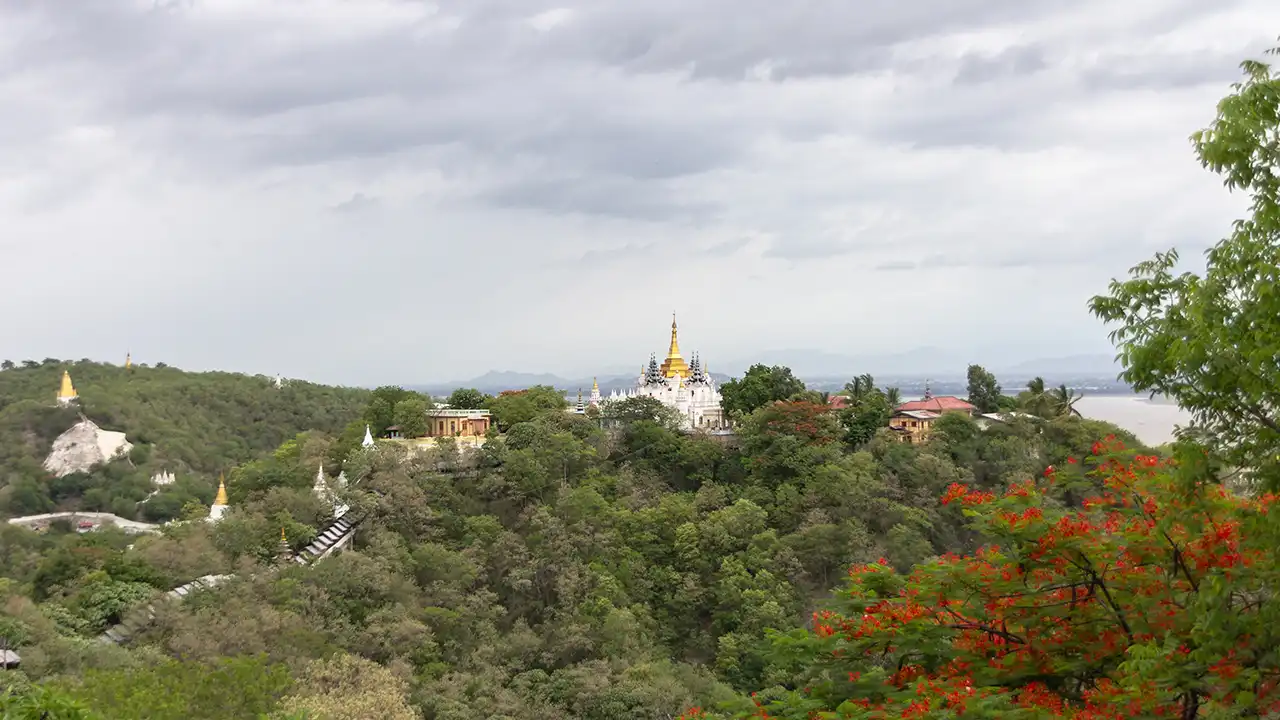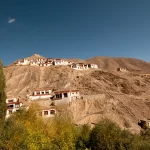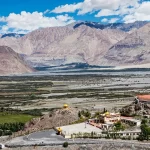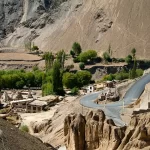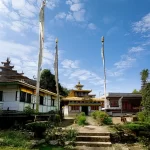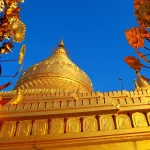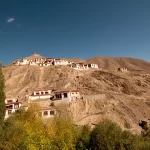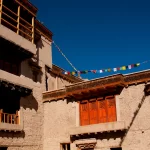Perched on a forested ridge overlooking Gangtok, the capital of Sikkim, is the revered spiritual site of Enchey Monastery. The name “Enchey” translates to “solitary monastery,” and true to its appellation, it sits serenely among fluttering prayer flags and whispering pines, just 3 kilometers from the city of Gangtok. Despite being near the city, the monastery has an air of serene isolation and is a haven for monks, pilgrims, and travelers seeking spiritual solace.
Established more than 200 years ago, Enchey Monastery is not only a place of worship—it is a living embodiment of Sikkim’s rich Buddhist heritage, a keeper of sacred traditions, and a lively hub of community activity. This article delves into the monastery’s historical importance, architectural beauty, spiritual traditions, and cultural significance in the larger context of Sikkimese identity.
Origins and Historical Significance
The history of Enchey Monastery traces back to the early 19th century when Lama Druptob Karpo, a tantric master renowned for his spiritual capabilities and ability to fly, built a small hermitage on this place. It is said that the lama flew from Maenam Hill in South Sikkim to this ridge and decided to construct his retreat there. Over time, the hermitage developed into a full-fledged monastery in 1909 through the patronage of Sidkeong Tulku, who was the reigning monarch of Sikkim.
Enchey was built according to Chinese pagoda style and dedicated to the Tibetan Buddhist tradition of Nyingma, the senior of the four major schools. The monastery then became an office of religious supremacy and reputed to be guarded by deities that granted boons to faithful visitors and protected the nation.
Although one of the smaller monasteries in Sikkim by size, Enchey is a site of supreme holiness. It is also highly respected among the locals because of its association with Khangchendzonga, the protector deity of Sikkim. The monastery is so powerful that it is believed to chase away evil spirits and bad luck for the region.
Architecture: A Synthesis of Simplicity and Splendor
Architecturally speaking, Enchey Monastery is a combination of restraint and beauty. Built in the shape of a Chinese pagoda, the monastery features sloping roofs, intricately carved wooden cornices, and brightly painted window frames. A riot of color welcomes one—shining yellows, reds, and blues echoing traditional Tibetan Buddhist motifs. Prayer wheels adorn the entrance, and long strips of prayer flags flutter in the wind, carrying mantras into the sky.
The main prayer hall is adorned with portraits of eminent Buddhist deities, including Lord Buddha, Lokeshwara (the compassion god), and Guru Padmasambhava (also known as Guru Rinpoche), the tantric master who brought Buddhism to Tibet. Statues and murals are the highlight of the inside, depicting stories from Buddhist literature and lending visual beauty to contribute to the religious atmosphere.
One of the most intriguing features of the monastery is its stunning mural art. The murals not only serve an aesthetic purpose but also have profound philosophical and historical significance. The complex thangkas (scroll paintings) in the monastery show scenes from the life of the Buddha, cosmological maps, and pictures of wrathful deities meant to ward off evil.
Monastic Life at the Monastery: Monastic Routine and Devotion
Enchey Monastery is inhabited by a small group of monks who practice a disciplined monastic regime of chanting, prayer, reading, and meditation. Most of the monks are of the Nyingma order, and most of them have been sent to Enchey from other monasteries in Sikkim and the wider Himalayas.
The day typically begins early, before sunrise, with the sounding of the long Tibetan horn (dungchen) and morning prayers echoing across the hills. Meals are simple, typically butter tea, rice, and lentils, and offerings may be made during ceremonies and festivals. The rest of the day is occupied by reading scriptures, philosophic debating, and rituals.
Enchey monks also serve as religious guides to villagers. Individuals usually visit there for blessings, counseling, or healing. The monastery is a part of the community and plays its role during birth, illness, and death.
Cham Dance and Festivals: Living Tradition
One of the most vibrant manifestations of Enchey’s living tradition is the Cham Dance festival, held annually in the 12th lunar month of the Tibetan calendar (January or February). The two-day celebration is a feast for the eyes and soul that draws visitors from across Sikkim and neighboring states.
The cham dances are ancient ritual dances created by monks dressed in ornate brocade robes and golden masks depicting various deities, demons, and animals. The dance is not entertainment, but an exercise of meditation, a devotion, and a replay of heavenly plays. The dance is played together with the rhythmical beat of antique instruments such as cymbals, drums, and long horns.
The most recognizable character in the dance is Mahakala, the wrathful protector deity. His bulging, flaming hair and eyes are terrifying to behold. His dance repels negative energies and protects the community from harm in the coming year.
Symbolism and Spiritual Relevance
Enchey Monastery holds deep symbolic significance for Sikkimese. The location is believed to be blessed by three guardian gods—Khangchendzonga, Yabdean, and Mahakala—who reside in its sanctum. These gods are invoked not just for personal blessings but also for the well-being of the whole region.
The monastery is also a religious anchor in times of turbulence. During times of political change, natural disasters, or civil unrest, the locals will seek solace from the monastery. Its survival confirms a sense of continuity, tradition, and protection from God.
Tourism and Accessibility
Because of its serene location and cultural significance, Enchey Monastery has become a popular spot for tourists visiting Gangtok. Just a short trek or drive from the city center, the monastery offers stunning views of the Kanchendzonga range and the city below. The monastery’s surroundings are serene, with pine-scented air and quiet walking trails ideal for meditation.
Despite welcoming visitors, certain rules need to be followed. Shoes are removed before entering the prayer hall, photography is forbidden during rituals, and modest attire and behavior are expected. Monks are affable and usually available, and guided tours normally exist with local tourist bureaus’ help.
Preserving Heritage
In the recent past, Enchey Monastery has also undergone an attempt at restoration and maintenance by the state government and heritage societies. As with most ancient monuments, it has also suffered from weather damage, threats of modernization, and needs for infrastructure enhancement. Restoration measures have addressed issues of conserving the murals, strengthening the foundation, and enhancing tourist facilities at no expense to the religious ambiance.
In addition, the monastery continues to be funded by the diaspora and local population so that its traditions and teachings can be transferred to the following generation.
A Quiet Guardian of Spirit and Culture
Enchey Monastery is not maybe the biggest or largest of Himalayan monasteries, but in its subtle influence, it discovers another kind of significance. It is a guardian of Sikkim’s spiritual heritage, a place where the mystical and the earthly converge. Here, the scent of incense blends with the mountain breeze, prayer flags flutter against the horizon, and the soft whispers of ancient chants keep reminding all who visit here that the divine is never out of reach.
Whatever draws you to Enchey Monastery—history, beauty, tranquility, or cultural awareness—you will depart with an experience that echoes long after the journey—is not only burned into memory, but into the soul.

